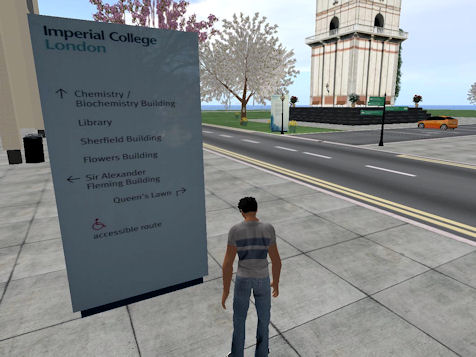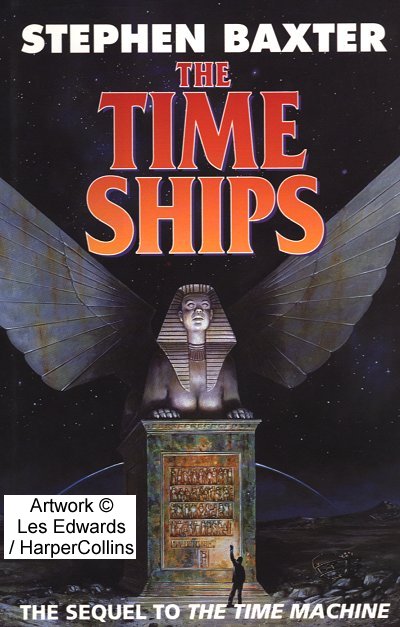The registered user population of the virtual world Second Life has, according to owners Linden Lab, grown in the last five years to over 15 million, about 70,000 of whom are ‘in the world’ at any one time. I’ve been a virtual citizen for about six months and, while I’ve denied myself the latest cyber fashions, angel wings, and other personal embellishments, can drive a car and I do know how to fly.

If you haven’t visited, its worth checking out. Entry-level access costs nothing; you just download the free software, give yourself a name, and jump into the training area.
It’s pleasant enough just to tour the virtual landscape, take a lecture, watch a play, or visit a library in Second Life. But I got to thinking on my last visit – always dangerous – of the similarities between this world and another virtual world competing for my time – the Morlock sphere in Stephen Baxter‘s book ‘The Time Ships’.

Writing in the style of H.G.Wells, Baxter recounts a trip through time to an earth of the far future. The time traveller is the same one we met in H.G.’s original ‘The Time Machine‘; you know – Rod Taylor played him in the movie.
On arrival, our hero finds a race of evolved humans, the Morlocks, who inhabit not the Earth any longer, but the inner surface of a huge spherical shell built at the orbit of venus. The sphere entirely encompasses the sun, collecting all the energy and matter its inhabitants could ever conceivably need. All our familiar resource problems have vamoosed. There is no want.
It’s the same in Second Life, with its boundless expanses of developable landmass and an effectively bottomless – if virtual – resource of materials and energy. The cherry on the cake in both worlds is the way buildings and other useful objects either appear out of nowhere (Second Life) or pop up ready synthesised from the floor material (Morlock sphere).
It is this possibility of zero constraint, albeit delivered in different ways in the two worlds, that I find intriguing, challenging us to engage with (or reject) revolutionary models of how we might one day define ourselves and our lives.
While there is some real-world negative sentiment towards Second Life, of the “get a first life” variety, experience of virtual worlds can alert us to how limited, cumbersome, and parochial some aspects of our real world lives can be. Baxter’s conception frees us from these aspects, blurring the lines between what we now see as real and virtual, and melding the two into a possible future reality. In a world without limit or want, what would become of our values, drives, motivations and pleasures?
Baxter’s world all sounds like science fiction – which it is. But whether his vision, or something totally different, comes to pass is next to the fact that many people have as much difficulty conceiving of the far, far, future as they do of the distant, distant past. It’s one reason some people never get to grips with evolution; they can’t conceive of the time it’s taken for all those small changes to occur. Material spheres the size of planetary orbits sound ridiculous, but if we don’t kill ourselves off first – granted a very real possibility – who is to say what we might do.
Anyhow, if any of that rambling has whetted your appetite to engage in some really far, far, incredibly far, reach speculation of alternative futures, the sort that make the Morlock sphere look like a walk in the park, I can recommend Damien Broderick’s ‘Year Million – Science at the Far Edge of Knowledge’. There is a comprehensive review of it here by Jon Turney.
Or if you’d rather just go for a lie down, that’s good too.
Also of interest ?
Are we Surrounded by Dyson Spheres? Io9.com May 2011